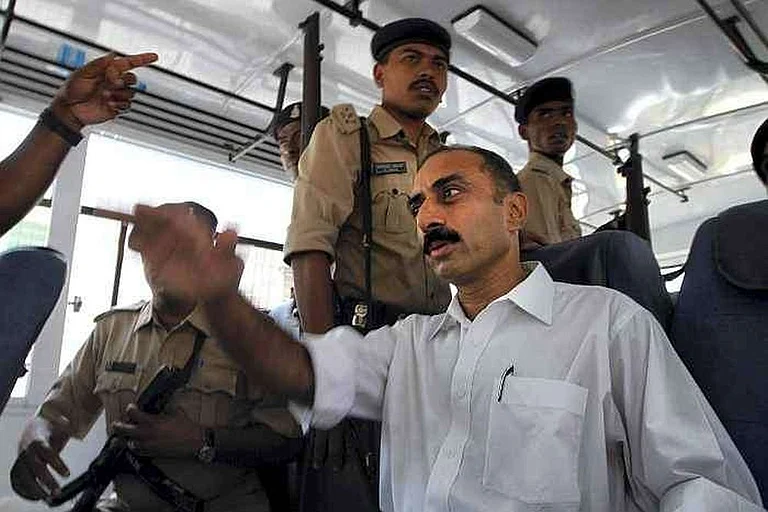More than seven decades ago, Jagdish Bhatt’s ancestors packed their entire puppetry paraphernalia and moved out of native central Rajasthan to settle in the national capital. Today, the reason for that troubled 20th-century migration has resurfaced the household with greater intensity, but then middle-aged Jagdish is tenacious.
“See, our hamlet brims with puppeteers these days. The (professional) competition has only become more challenging,” he says, unsmilingly. Then, looking sideways, the artiste adds—as if to remind himself as well, “Well, we have to keep reinventing. We always do it.”
Jagdish, 50, lives in Kathputli Colony of West Delhi’s Shadipur Depot. A cluttered 5.2-hectare plot brimming with 2,800 families of street performers, it is where he was born almost a quarter century after his father’s family chose to leave their village in Nagaur district and travel 450 km eastward to earn a livelihood in a city that has been for centuries a melting pot of cultures.

“My family came to Delhi in the early 1940s because they found themselves amid a glut of fellow artistes. The places around their Bansa-Nimod belt had anyway seen lots of this traditional form—almost bored with it,” reasons Jagdish, who is a leading figure in contemporary Rajasthani string puppetry that has a history of 1,500 years with initial patronage from kings and nobles. “Of late, our Kathputli Colony, with roughly 20,000 people, has an oversupply of artistes. It has made our lives challenging, with each passing day.”
It’s not that the five-decade-old ghetto is inhabited by families of just one art-form. Kathputli Colony has an array of performers: acrobats, jugglers, snake-charmers, painters, storytellers, traditional healers, animal sportsmen, magicians, dancers, stilt and tightrope walkers and folk singers. Yet puppeteers a sizeable segment—“400 to 500 families,” as per Jagdish’s estimates—and form the face of their crowded slum.
On his part, Jagdish goes on trying improvisations in his art that has the decked-up wooden marionette controlled by a string wielded by the puppeteers from above, standing behind a back-curtain that doubles as a visual back-up for the show. The audio accompaniment comes in the form of vocals (often harmonium-assisted Rajasthani folk music) and the two-headed dholak drum by one or more pair of hands.

“We do perform traditional repertoire, but we also add new elements to its plots, scenes, characters and music,” says Jagdish, who learnt the art from senior members of his family and performs with the assistance of his Pappudi Bhatt, their young son Hemanshu and sexagenarian brother-in-law Madan Bharti.
So, besides the typical stories of fabled Raja-Maharani or on 17th-century Marwar Rajput Amar Singh Rathore or Mughal emperor Akbar, the team has conceived and choreographed presentations based on ancient Hindu mythology to modern-day issues. “We do plays based on Lord Ram. It does fetch us shows during Ramlila festival season,” points out Jagdish. “Such efforts give us a chance to also compose new literature, music and come out with novel puppets.”
At the other end of the spectrum, the troupe gets offers to do puppetry based on theme such as family planning or eradication of social evils. “These would come from government and allied agencies. They are meant to spread the message to interior villages,” says Bhatt.

Corporate houses, too, hire them. “It could be, say, for the promotion of a new bike by a renowned company or to give publicity to a bank which is branching out to other branches of personal finance,” points out the artiste.
The venues could be, besides cultural festivals and open fairs, smaller get-togethers. “We get invitations from schools for the students, birthday-party and similar family functions, hotels and from social organisations,” informs Bhatt, who just returned from Hyderabad which had Telangana Tourism hosting the annual Krishnakriti Festival. The family also leads puppetry workshops, where it passes on lessons on making the marionettes and manipulating their movements to various rhythms and situational moods.
These days, at his shows, Jagdish would come from behind the backdrop of the puppets—and show the marionettes dance to music that are least Rajasthani by tune or ethos. That would include belly dance by Colombian singer-songwriter of the Waka Waka fame. Evidently, the journey in pursuit of entertainment has proceeded much beyond the Rajasthan-Delhi belt.


























